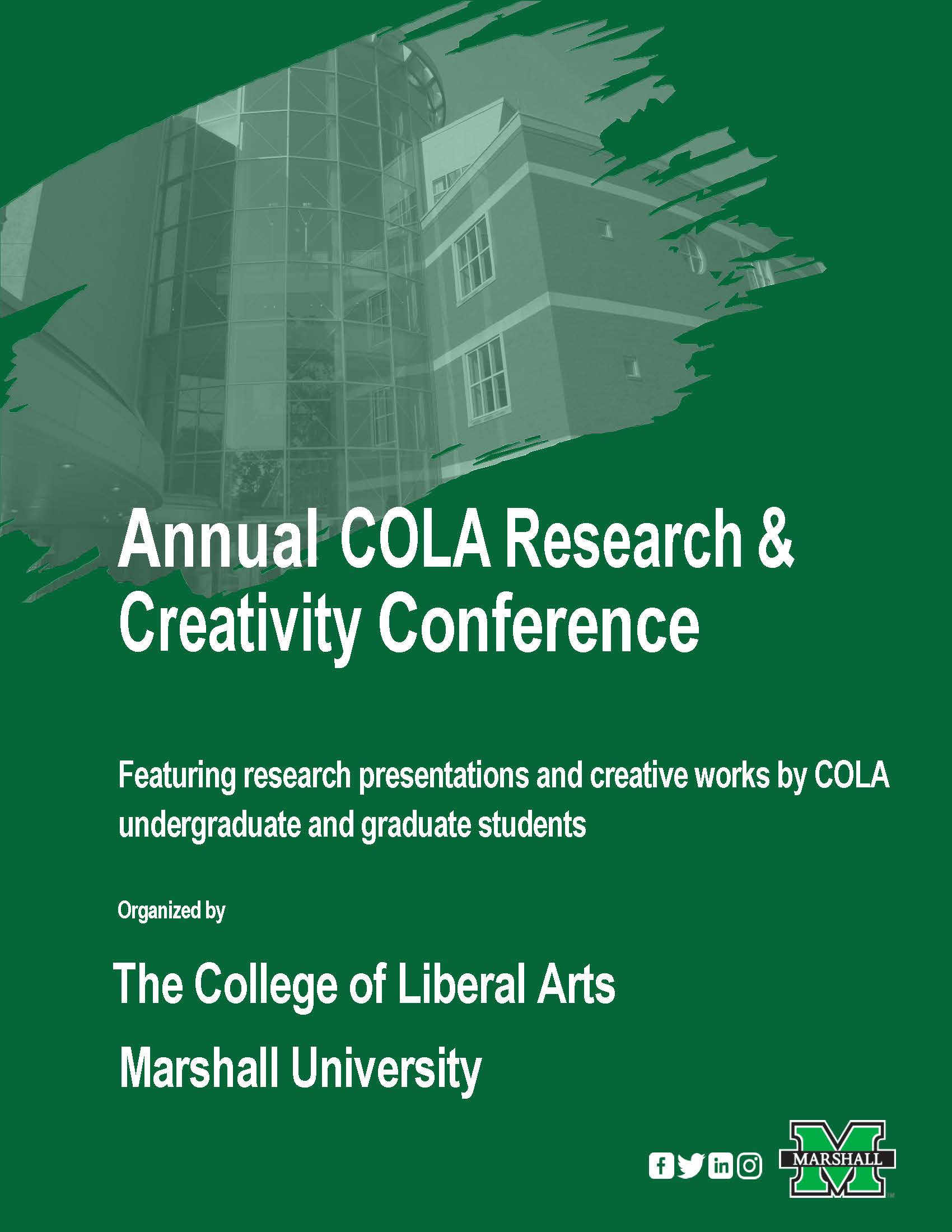Document Type
Poster Presentation
Start Date
18-4-2019 3:30 PM
End Date
18-4-2019 4:45 PM
Keywords
archaeology, frontier, colonial
Biography
Sam Foresha is a student of anthropology and archaeology and the president of the Anthropology Club at Marshall University. She has always had an interest in the cognitive theories of archaeology, as well as the socio-cultural role the military and warfare plays. She is the eldest of three children, the first to go to college in her household. She lives in Follansbee, WV with her family, just across the river from the site chosen for her project, Steubenville, OH.
Major
Anthropology
Advisor for this project
Dr. Freidin
Abstract
The word “frontier” brings to mind certain connotations. The American public might think of Davy Crockett and his trademark coonskin cap, or of what came to be known as the Indian Wars as Americans pushed farther and farther west, conquering the rivers, plains, and mountains that lay just beyond colonial reach. But what was a frontier fort really like at the turn of the 19th Century? This paper explores that question through the study of archaeological artifacts left behind by the inhabitants of Fort Steuben. The fort, constructed in 1787, in what is now Steubenville, Ohio, was home to early American surveyors, soldiers, and civilians as they began their colonial expansion into the west. I have analyzed three artifacts found at the fort during recent excavations; a clay pipe bowl, a musket flint, and a coin with King George III on the face. This paper will examine them, their history, and the importance of studying the frontier forts to learn just what life was like in those early days of “Manifest Destiny.”
PowerPoint
What They Carried: An Archaeological Analysis Of Artifacts Found at Fort Steuben
The word “frontier” brings to mind certain connotations. The American public might think of Davy Crockett and his trademark coonskin cap, or of what came to be known as the Indian Wars as Americans pushed farther and farther west, conquering the rivers, plains, and mountains that lay just beyond colonial reach. But what was a frontier fort really like at the turn of the 19th Century? This paper explores that question through the study of archaeological artifacts left behind by the inhabitants of Fort Steuben. The fort, constructed in 1787, in what is now Steubenville, Ohio, was home to early American surveyors, soldiers, and civilians as they began their colonial expansion into the west. I have analyzed three artifacts found at the fort during recent excavations; a clay pipe bowl, a musket flint, and a coin with King George III on the face. This paper will examine them, their history, and the importance of studying the frontier forts to learn just what life was like in those early days of “Manifest Destiny.”




